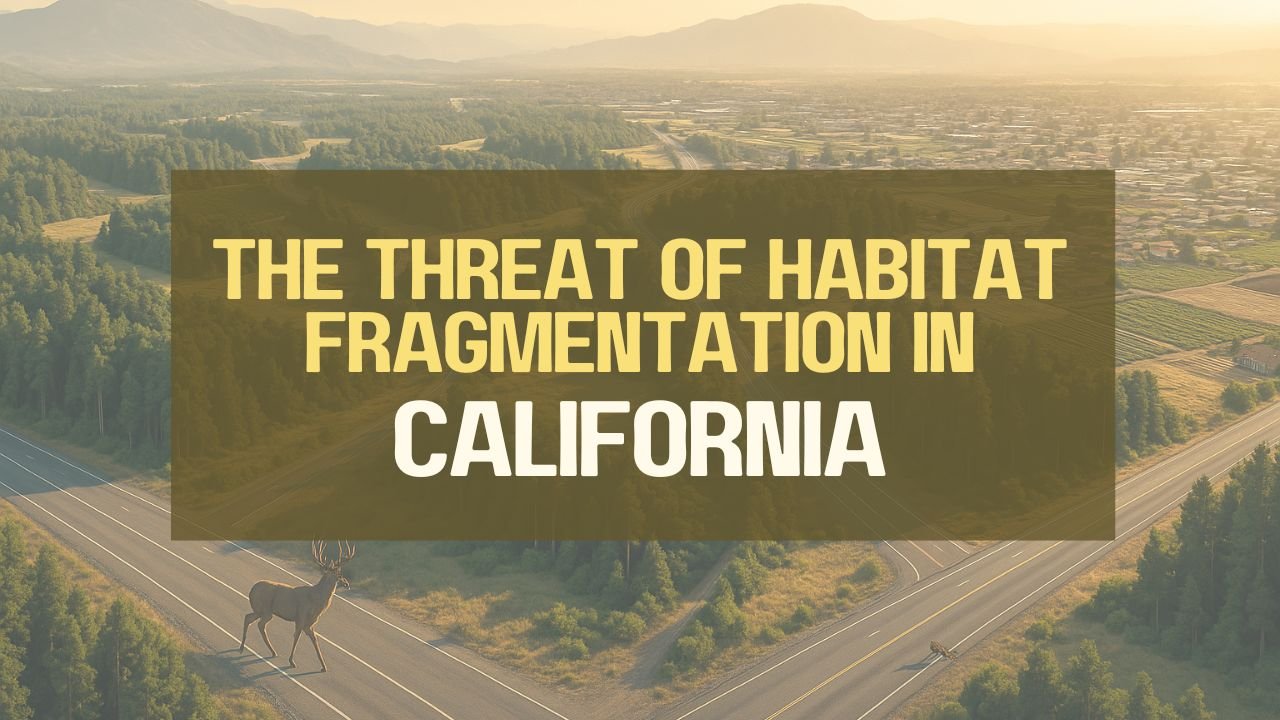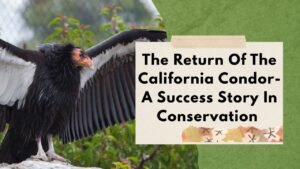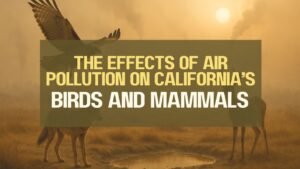California, known for its breathtaking landscapes and diverse wildlife, stands at a crossroads.
From the redwood forests of the north to the deserts of the south, the Golden State is home to some of the most biologically rich ecosystems on the planet. But these natural treasures face an escalating threat — habitat fragmentation.
This silent crisis happens when vast, continuous natural areas are divided into smaller, disconnected patches by human development, agriculture, and infrastructure. The result? Wildlife populations become isolated, migration paths vanish, and ecosystems lose their ability to function properly.
In this comprehensive article, we’ll explore what habitat fragmentation is, how it affects California’s species and landscapes, and what efforts are being made to reconnect nature.
You’ll learn how scientists, lawmakers, and citizens are working together to ensure the state’s natural systems remain resilient for generations to come.
What Is Habitat Fragmentation?
Breaking Down the Concept
Habitat fragmentation occurs when once-large areas of natural environment are divided into smaller, scattered pieces. It’s not necessarily about complete destruction — instead, it’s about separation. Even if much of the habitat technically remains, the connections between those spaces are broken.
This fragmentation can be caused by:
- Expanding cities and suburbs
- New roads, highways, and railways
- Farmland conversion
- Dams, pipelines, or fences
- Logging, mining, and energy infrastructure
Over time, these isolated patches can no longer support healthy populations of animals and plants. The spaces between — known as the “matrix” — are often too dangerous or barren for species to cross.
Why Habitat Fragmentation Matters
When ecosystems are sliced apart, their ecological health declines. Animals can’t travel to find food, mates, or shelter. Plants lose pollinators. Rivers get cut off from wetlands. Every part of the natural chain becomes weaker.
The consequences include:
- Reduced gene flow: Species can no longer interbreed freely, leading to inbreeding and genetic weakness.
- Edge effects: As the amount of “edge” habitat increases, interior species lose protection from predators, wind, and invasive species.
- Loss of biodiversity: Populations shrink, and rare species disappear entirely from isolated areas.
- Disrupted ecosystem services: Pollination, water filtration, and soil formation slow down or fail.
- Climate vulnerability: Fragmented ecosystems can’t adapt to shifting temperature zones.
In short, fragmentation doesn’t just threaten wildlife — it destabilizes the entire natural web that humans rely on for clean water, air, and food.
California: A Global Hotspot for Biodiversity
California is one of the world’s 36 recognized biodiversity hotspots, meaning it contains vast numbers of species found nowhere else — but also faces extreme threats.
The state’s ecosystems range from towering Sierra Nevada forests to sun-baked deserts, coastal scrublands, and lush wetlands. Yet decades of development have carved this natural mosaic into disjointed fragments.
Key Facts About California’s Biodiversity
| Category | Approximate Figures | Description |
|---|---|---|
| Native Plant Species | 6,500+ | About 30% are found only in California |
| Endemic Vertebrates | 150+ | Many reptiles, amphibians, and fish exist nowhere else |
| Protected Areas | ~47 million acres | Includes national parks, forests, and reserves |
| Land Converted by Development | Over 5 million acres | Urban and agricultural expansion |
| Species at Risk of Extinction | More than 300 | Listed under state or federal protection |
This balance between abundance and fragility makes California especially vulnerable to habitat fragmentation.
The Major Drivers of Habitat Fragmentation in California
1. Urbanization and Sprawl
California’s population exceeds 39 million — and growing. Cities like Los Angeles, San Diego, and San Francisco continue expanding outward, paving over open space. Suburban development often occurs in sensitive foothill and coastal areas, splitting wildlife corridors that once connected mountain ranges and wetlands.
Highways are one of the most damaging factors. Freeways like I-5, I-15, and Highway 101 cut across migration routes for mountain lions, bobcats, and deer, creating deadly barriers.
2. Agriculture and Land Conversion
The Central Valley is one of the most productive agricultural regions in the world. Yet vast fields of monoculture have replaced native grasslands, wetlands, and oak savannas.
Wildlife such as the San Joaquin kit fox, giant garter snake, and burrowing owl now survive only in scattered remnants surrounded by farmland.
Pesticides and irrigation canals further fragment habitats, creating artificial boundaries where none existed before.
3. Infrastructure and Energy Development
Dams, pipelines, solar farms, and wind energy projects — while important for human progress — often slice through previously connected landscapes. Wind farms in the Tehachapi Mountains and desert regions, for example, can displace or harm birds and bats that migrate through those corridors.
Similarly, fencing around energy projects or transmission lines prevents large mammals from moving freely between habitats.
4. Wildfires and Climate Change
California’s wildfire patterns have changed dramatically in the last few decades. Instead of small, naturally occurring burns, today’s fires are massive, fast-moving, and destructive. They leave behind patchy, degraded landscapes that fragment forests and scrublands even more.
At the same time, climate change forces species to move to cooler or wetter areas. But when habitats are fragmented, migration becomes impossible — leaving many species trapped in unsuitable conditions.
5. Roads and Transportation Networks
Roads may seem small compared to cities or farms, but they have enormous ecological impacts. They not only divide habitats but also cause wildlife mortality through vehicle collisions.
Roads alter drainage patterns, introduce invasive weeds, and create noise pollution that affects bird communication and breeding.
Examples of Species Threatened by Fragmentation
Mountain Lions (Puma concolor)
California’s mountain lions require vast territories for hunting and mating. However, highways and housing developments have cut their ranges into small, isolated patches.
In Southern California, genetic studies reveal that lions in the Santa Monica and Santa Ana Mountains are becoming inbred, threatening their long-term survival.
Wildlife crossings, like the newly constructed bridge over Highway 101, aim to reconnect these isolated populations.
California Gnatcatcher
This tiny gray songbird, native to coastal sage scrub habitats, has lost much of its territory to housing and urban expansion. The fragmentation of the coastal scrub ecosystem has caused population declines, making the gnatcatcher a symbol of California’s habitat crisis.
Fisher (Pekania pennanti)
The fisher, a small carnivorous mammal found in the Sierra Nevada, relies on dense, old-growth forests for shelter and hunting. Logging, road construction, and megafires have fragmented these habitats, leaving isolated populations struggling to survive.
San Joaquin Kit Fox
Once widespread across the Central Valley, this small fox now occupies only about 7% of its historic range. Urbanization around Bakersfield and intensive agriculture have divided its habitat into disconnected patches, leading to genetic isolation and disease vulnerability.
American Pika
These small mammals live in rocky alpine habitats. As temperatures rise, pikas move upslope seeking cooler conditions — but their range is now fragmented by roads and recreation zones. They serve as an early warning sign of how climate and fragmentation interact.
Ecological Impacts of Fragmentation
Habitat fragmentation doesn’t affect just individual species — it reshapes entire ecosystems.
1. Genetic Isolation
When populations are cut off, they can no longer exchange genes with others, leading to inbreeding and reduced genetic diversity. This makes them more vulnerable to disease and environmental change.
2. Altered Predator-Prey Dynamics
Fragmented areas may favor predators or invasive species that thrive in edge habitats, leading to imbalanced food webs.
3. Decline of Pollinators
Bees, butterflies, and birds need connected landscapes to move between feeding and breeding sites. Fragmentation reduces pollination, directly affecting native plants and crops alike.
4. Water and Soil Degradation
Wetlands and riparian zones — crucial for water filtration and flood control — often suffer when development disrupts their connectivity. Erosion and runoff increase, degrading soil fertility.
5. Loss of Climate Resilience
Continuous habitats allow species to migrate naturally as climates shift. Fragmented ecosystems lose this adaptive capacity, making extinction more likely under changing conditions.
The Role of Conservation and Policy
California has some of the most advanced environmental protection laws in the United States. Yet fragmentation continues because urban growth and economic pressures often outweigh ecological considerations.
Wildlife Corridors and Connectivity Projects
Wildlife corridors are key solutions to fragmentation. These are stretches of land or engineered structures that reconnect isolated habitats. Examples include underpasses, overpasses, and green bridges that allow animals to cross highways safely.
Efforts across the state now aim to link major ecosystems — from the Santa Monica Mountains to the Sierra Nevada foothills.
Protected Lands and Conservation Easements
California’s network of national and state parks, forests, and reserves protects nearly half of its land area. However, many of these areas are still disconnected. Conservation easements — voluntary agreements with private landowners — are helping create buffer zones and linkage corridors.
Restoration and Rewilding
Restoration projects aim to rebuild damaged ecosystems by removing barriers, planting native vegetation, and restoring natural hydrology. Rewilding efforts, such as reintroducing keystone species like beavers, can help recreate natural processes that maintain connectivity.
Smart Growth and Land-Use Planning
Urban planners are adopting “smart growth” strategies that minimize environmental footprints. This means building upward, not outward, and preserving greenbelts between cities to maintain habitat connections.
By integrating wildlife considerations into zoning laws, California can balance human development with ecological integrity.
Major Threats and Solutions to Habitat Fragmentation in California
| Threat | Impact on Ecosystem | Example Area | Potential Solution |
|---|---|---|---|
| Urban expansion | Cuts off wildlife corridors | Los Angeles Basin | Create green infrastructure and wildlife bridges |
| Agriculture | Converts natural habitat | Central Valley | Encourage sustainable and rotational farming |
| Roads and highways | Increase wildlife deaths | I-5, Highway 101 | Construct animal underpasses and fences |
| Wildfires | Destroy large connected forests | Northern & Southern CA | Fire-resistant vegetation, prescribed burns |
| Energy development | Disrupts migration routes | Mojave Desert, Tehachapi | Strategic siting and wildlife-safe designs |
| Climate change | Forces species migration | Sierra Nevada | Protect elevation gradients and corridors |
The Human Dimension: Why It Matters to Us
People often forget that healthy ecosystems are essential to human well-being. Fragmentation affects:
- Water security: Forested watersheds filter drinking water.
- Agriculture: Pollinators and natural pest control decline when habitats break apart.
- Tourism: Wildlife and scenic landscapes draw millions of visitors yearly.
- Public health: Green spaces reduce air pollution and support mental well-being.
By protecting habitats, Californians are also protecting their own future.
What the Future Holds
If current trends continue, habitat fragmentation will worsen with population growth and climate change. But California has the tools to fight back — advanced science, strong public support for conservation, and legislative action.
Emerging technologies like satellite mapping, AI-driven land modeling, and genetic monitoring allow researchers to identify critical corridors and predict where future fragmentation may occur. These insights help planners prioritize areas for restoration and protection.
The state’s long-term goal is to create an interconnected network of resilient landscapes that allow species to move freely while supporting sustainable human development.
Habitat fragmentation is one of California’s most pressing environmental threats — yet it often goes unnoticed. The state’s majestic landscapes may appear unbroken from a distance, but beneath the surface, invisible barriers are slowly dismantling the web of life.
From mountain lions trapped by highways to birds losing nesting grounds, every creature depends on connectivity. The challenge is enormous, but the solution is within reach: protect open space, restore damaged corridors, and plan cities with nature in mind.
If Californians act decisively today, the next generation will inherit not only thriving cities but also thriving ecosystems — the true heartbeat of the Golden State.
FAQs
What is the main cause of habitat fragmentation in California?
Urban development and road construction are the leading causes, followed by agricultural expansion and large infrastructure projects. These divide natural habitats into smaller, isolated sections.
How does fragmentation impact climate change adaptation?
Fragmented habitats limit species movement, making it harder for them to migrate to suitable climates as temperatures and rainfall patterns shift.
What are the best ways to combat habitat fragmentation?
Building wildlife corridors, protecting remaining open spaces, restoring degraded areas, and planning smarter cities are the most effective strategies.



